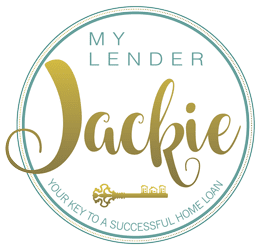 Before the housing crash in 2008, a popular alternative to the traditional mortgage was called the Ninja mortgage which stands for “no income, job, or asset verification. This is also referred to as a no doc mortgage. Now while this might seem a little crazy, there were lenders that were specifically trained on how to discover, ask, or unearth alternative documentation. Unfortunately, a lot of lenders that were not well-versed in this process were allowed to submit these type of loans and this is why we had the subprime mortgage bust where a lot of people lost their homes because they just couldn’t afford them. I mean, we can’t just trust that someone makes $100,000 a year without going on any type of documentation, right?
Before the housing crash in 2008, a popular alternative to the traditional mortgage was called the Ninja mortgage which stands for “no income, job, or asset verification. This is also referred to as a no doc mortgage. Now while this might seem a little crazy, there were lenders that were specifically trained on how to discover, ask, or unearth alternative documentation. Unfortunately, a lot of lenders that were not well-versed in this process were allowed to submit these type of loans and this is why we had the subprime mortgage bust where a lot of people lost their homes because they just couldn’t afford them. I mean, we can’t just trust that someone makes $100,000 a year without going on any type of documentation, right?
Well, today, we have perfected this bank statement, stated income, or no doc mortgage and basically, it only requires a mortgage application and a signature. We don’t have to go off of pay stubs, bank statements, or even tax returns in some cases, but not all. It was to make qualifying easier for applicants whose income and/or assets were difficult to verify in a traditional manner. However, they are not meant to be used for those that simply want to lie about their income. What’s the point of getting a home if you can actually afford it? However, in 2006 and 2007, a lot of people that could not afford a mortgage were able to apply for one, obtain a loan, and then of course, for close within a few months to a couple of years.
This is why we have a rule called the Ability to Repay or ATR. This means that all new mortgages must comply with the basic requirements that protect the consumer from applying and taking on alone they can’t afford. As a lender, it is my job to determine that an applicant can repay a loan before underwriters approve it. However, lenders don’t need to verify the income the same way Fannie Mae does to comply. Lenders analyze bank statements, average deposits, or even a letter from an accountant or tax attorney verifying income. There are several ways to look at the income that do not require tax returns, W-2s, or pay stubs.
There are a lot of different reasons people may be unable to verify their income but this doesn’t mean that the can’t afford a home. For instance, those that have up to 40% to put down for down payment, great credit, excellent payment history, don’t need the same requirements as someone with a lower credit score and lower down payment. For those with complicated finances, alternative document mortgages can be a great option. Self-employed individuals can also use this type of loan when they can’t verify every single source of income because there are too many sources coming in from different outlets.
So how can one qualify?
Typical requirements but not mandatory include:
- 700 minimum psycho score
- Savings of at least 12 months of principal, interest, taxes, and insurance after closing
- 35 to 40% down payment
What are the options for a lower credit score?
One of the best things about these loans is that smaller lenders and specialty lenders are more likely to carry these products than large banks. This is because investors are putting money into this part of the mortgage market, which yields larger profits than traditional financing. Many larger lenders view these loans with less documentation as riskier than traditional mortgages so the demand for alternative document home loans can be high, especially in higher-income counties.
Call me today and let’s find out your eligibility for this no doc mortgage. This might be the perfect option for your next refinance or home purchase
